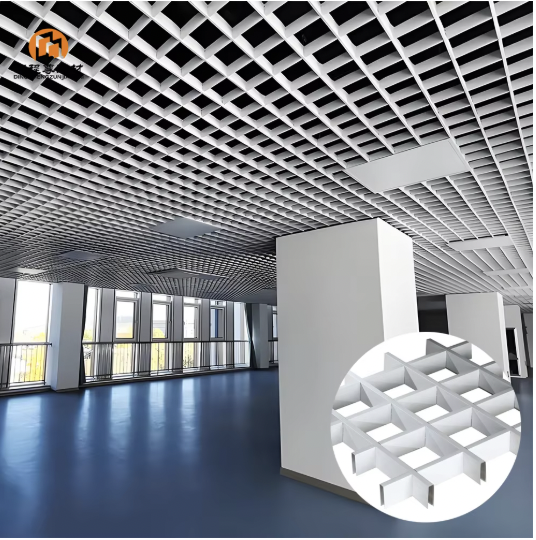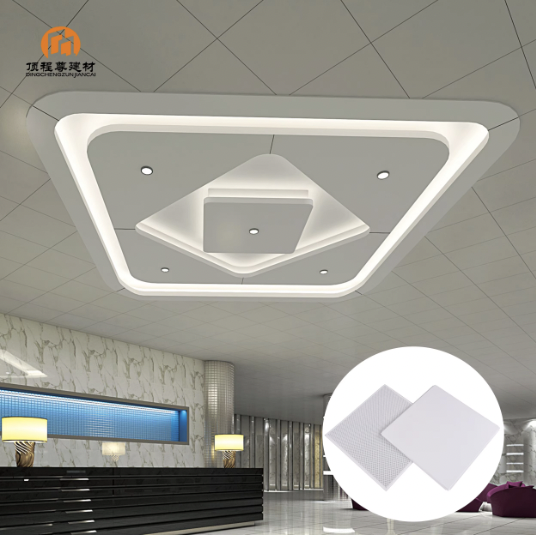Transforming Modern Workspaces with Advanced Ceiling Solutions
The evolution of office design has brought suspended ceiling tiles to the forefront of architectural innovation. These versatile ceiling systems have become increasingly popular in contemporary workspaces, offering a perfect blend of functionality and aesthetics. As businesses strive to create more efficient and appealing work environments, suspended ceiling tiles emerge as a crucial element in modern interior design.
Modern workspaces demand solutions that not only look professional but also contribute to overall productivity and employee well-being. Suspended ceiling tiles meet these requirements while providing numerous practical benefits that make them an ideal choice for office renovations and new construction projects.

Enhanced Acoustical Performance
Sound Absorption and Noise Reduction
In open-plan offices and collaborative spaces, managing noise levels is crucial for maintaining productivity. Suspended ceiling tiles excel in this aspect, featuring specially designed materials that absorb and reduce sound transmission. The acoustic properties of these tiles help create a more comfortable working environment by minimizing echo and controlling noise levels between different areas of the workspace.
High-quality suspended ceiling tiles can reduce noise levels by up to 70%, depending on their composition and installation method. This significant improvement in acoustic performance helps employees concentrate better and reduces the stress associated with constant background noise.
Improved Speech Privacy
Privacy in conversations is essential in any professional setting. Suspended ceiling tiles contribute to better speech privacy by preventing sound from traveling between different areas of the office. This feature is particularly valuable in spaces where confidential discussions take place, such as meeting rooms and private offices.
The acoustic rating of suspended ceiling tiles, measured in NRC (Noise Reduction Coefficient), typically ranges from 0.5 to 0.9, with higher values indicating better sound absorption. This makes them an excellent choice for creating discrete zones within open office layouts.
Flexible Access to Building Services
Easy Maintenance of Utilities
One of the most practical advantages of suspended ceiling tiles is the convenient access they provide to essential building services. The void space between the structural ceiling and the suspended ceiling houses various utilities, including HVAC systems, electrical wiring, plumbing, and data cables. This accessibility significantly reduces maintenance time and costs.
When repairs or modifications are needed, individual tiles can be easily removed and replaced without disrupting the entire ceiling structure. This flexibility is particularly valuable in modern offices where technology infrastructure frequently requires updates or modifications.
Future-Proof Infrastructure Management
The modular nature of suspended ceiling tiles allows for easy adaptation to changing office needs. New lighting fixtures, security systems, or smart building technologies can be integrated without major construction work. This adaptability ensures that the workspace can evolve with technological advancements and changing business requirements.
The standard grid system used in suspended ceiling installations provides a universal framework that accommodates various fixtures and equipment, making future upgrades straightforward and cost-effective.
Energy Efficiency and Sustainability
Thermal Insulation Benefits
Modern suspended ceiling tiles contribute significantly to a building's energy efficiency. The air space created between the structural ceiling and the suspended ceiling acts as an additional insulation layer, helping to regulate indoor temperatures more effectively. This natural insulation can lead to substantial reductions in heating and cooling costs.
Many suspended ceiling tiles are manufactured using materials with high thermal resistance values, further enhancing their insulation properties. This improved thermal performance can result in energy savings of up to 20% in some cases.
Eco-Friendly Materials and Design
Today's suspended ceiling tiles often incorporate sustainable materials and manufacturing processes. Many manufacturers offer products made from recycled content and ensure their tiles are fully recyclable at the end of their life cycle. This commitment to sustainability helps businesses meet their environmental responsibilities while creating healthier indoor environments.
The reflective properties of white suspended ceiling tiles can also reduce the need for artificial lighting by maximizing natural light distribution, further contributing to energy savings and environmental benefits.
Aesthetic Versatility and Design Freedom
Contemporary Style Options
The design possibilities with suspended ceiling tiles are virtually endless. Modern manufacturers offer an extensive range of styles, textures, and finishes to complement any interior design scheme. From sleek, minimalist panels to bold, decorative elements, suspended ceiling tiles can enhance the visual appeal of any workspace.
Available options include various patterns, colors, and materials that can be mixed and matched to create unique ceiling designs. This versatility allows architects and designers to achieve specific aesthetic goals while maintaining functional benefits.
Integration with Modern Lighting
Suspended ceiling tiles work seamlessly with contemporary lighting solutions. The grid system can accommodate various lighting fixtures, from traditional fluorescent panels to modern LED systems. This integration capability enables the creation of dynamic lighting schemes that enhance both the functionality and atmosphere of the workspace.
Advanced lighting solutions can be easily incorporated into suspended ceiling systems, allowing for the implementation of smart lighting controls and energy-efficient alternatives that improve the overall work environment.
Cost-Effective Installation and Maintenance
Rapid Installation Process
The installation of suspended ceiling tiles is typically faster and more straightforward than traditional ceiling construction methods. The modular design and standardized components allow for efficient installation, reducing labor costs and minimizing disruption to business operations. This efficiency is particularly valuable in renovation projects where time is of the essence.
Professional installers can complete large areas quickly, and the system's design allows for easy modifications if needed during or after installation. This flexibility helps manage project timelines and budgets effectively.
Long-Term Cost Benefits
While the initial investment in suspended ceiling tiles may be higher than some alternatives, the long-term cost benefits make them an economical choice. The durability of modern ceiling tiles, combined with their easy maintenance and replacement capabilities, results in lower lifecycle costs. Additionally, the energy savings and reduced maintenance requirements contribute to a favorable return on investment.
The extended lifespan of quality suspended ceiling tiles, often exceeding 20 years with proper maintenance, makes them a cost-effective solution for modern workspaces.
Frequently Asked Questions
How long do suspended ceiling tiles typically last?
Quality suspended ceiling tiles can last 20-30 years with proper maintenance. Their longevity depends on factors such as the environment, maintenance practices, and the quality of the initial installation. Regular cleaning and prompt replacement of damaged tiles can significantly extend their lifespan.
Can suspended ceiling tiles be installed in existing buildings?
Yes, suspended ceiling tiles can be installed in most existing buildings. The installation requires adequate ceiling height to accommodate the suspension system and any services that will be housed in the void space. A professional assessment can determine the feasibility of installation in specific situations.
Are suspended ceiling tiles fire-resistant?
Many suspended ceiling tiles are manufactured to meet strict fire safety standards. They can provide additional fire protection by creating a barrier that slows the spread of fire through a building. However, specific fire ratings vary by product, so it's important to choose tiles that meet local building codes and safety requirements.


